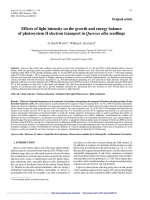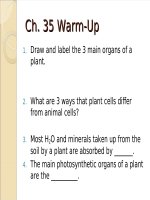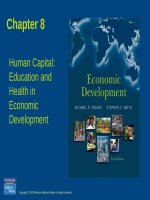Lecture Discovering nutrition - Chapter 8a: Spotlight on metabolism and energy balance
Bạn đang xem bản rút gọn của tài liệu. Xem và tải ngay bản đầy đủ của tài liệu tại đây (3.14 MB, 51 trang )
����������������������������������������������������������������������������������������������������������������������������������������������������������������������������������������������������������������������������������������������������������������������������������������������������������������������������������������������������������������������������������������������������������������������������������������������������������������������������������������������������������������������������������������������������������������������������������������������������������������������������������������������������������������������������������������������������������������������������������������������������������������������������������������������������������������������������������������������������������������������������������������������������������������������������������������������������������������������������������������������������������������������������������������������������������������������������������������������������������������������������������������������������������������������������������������������������������������������������������������������������������������������������������������������������������������������������������������������������������������������������������������������������������������������������������������������������������������������������������������������������������������������������������������������������������������������������������������������������������������������������������������������������������������������������������������������������������������������������������������������������������������������������������������������������������������������������������������������������������������������������������������������������������������������������������������������������������������������������������������������������������������������������������������������������������������������������������������������������������������������������������������������������������������������������������������������������������������������������������������������������������������������������������������������������������������������������������������������������������������������������������������������������������������������������������������������������������������������������������������������������������������������������������������������������������������������������������������������������������������������������������������������������������������������������������������������������������������������������������������������������������������������������������������������������������������������������������������������������������������������������������������������������������������������������������������������������������������������������������������������������������������������������������������������������������������������������������������������������������������������������������������������������������������������������������������������������������������������������������������������������������������������������������������������������������������������������������������������������������������������������������������������������������������������������������������������������������������������������������������������������������������������������������������������������������������������������������������������������������������������������������������������������������������������������������������������������������������������������������������������������������������������������������������������������������������������������������������������������������������������������������������������������������������������������������������������������������������������������������������������������������������������������������������������������������������������������������������������������������������������������������������������������������������������������������������������������������������������������������������������������������������o glucose
•
Gluconeogenesis
•
Fat and protein are primary fuel
Special States
•
Fasting
–
The early weeks
•
–
Several weeks of fasting
•
–
Several energy-conservation
strategies
Rely on stored body fat
The end is near
•
Muscle atrophy and emaciation
•
Sacrificed muscle tissue in attempt to
Energy Balance
•
•
Energy intake vs.
energy output
Energy equilibrium
–
Intake = output
–
Maintain weight
Energy Balance
•
•
Positive energy balance
–
Intake > output
–
Gain weight
Negative energy balance
–
Intake < output
–
Lose weight
Energy In
•
Regulation of intake
–
Internal cues
•
Hunger
– Prompts
•
Satiation
– Signals
•
eating
to stop eating
Satiety
– Tells
when you are ready to eat again
Energy In
•
Regulation of intake
–
External cues
•
Appetite
– Psychological
– Influenced
desire to eat
by the eating
environment
Energy In
•
Control by committee
–
What stimulates our cues?
•
Internal, physiological response
•
Eating environment
Energy In
•
Internal factors
–
Gastrointestinal sensations
•
–
Sense of fullness
Neurological and hormonal factors
•
Neuropeptide Y
•
Ghrelin
•
Leptin
Energy In
•
External factors
–
Diet composition
•
•
–
Energy density, balance of energy
sources, and form
Macronutrients
Sensory properties
•
Taste
Energy In
•
External factors
–
Portion size
•
–
Environment and social factors
•
–
Super-size culture
Hypothalamus
Emotional factors
•
Hypothalamus
Energy Out: Fuel Uses
•
Total energy expenditure
•
Major components of energy expenditure
–
Energy expenditure at rest (basal energy
expenditure)
•
•
Energy for basic body functions
Affected by body size, composition,
age, and gender
Energy Out: Fuel Uses
•
Major components of energy expenditure
–
Physical activity
•
•
–
Highly variable
Affected by body size, fitness level,
type of activity
Thermic effect of food (TEF)
•
Energy to digest, absorb, metabolize
food
Energy Out: Fuel Uses
•
Estimating total energy expenditure
–
–
Resting energy expenditure (REE)
•
1.0 kcal/kg/hr for males
•
0.9 kcal/kg/hr for females
Physical activity
•
–
Add a % of REE (see Table 8.2)
Thermic effect of food
•
6% to 10% of (REE + physical activity)
Estimating Energy Expenditure
•
Estimated Energy Requirement (EER)
–
Equations for males and females
•
–
Factors for age, weight, height, and
physical activity
Predicts total energy expenditure (TEE)
Body Composition
•
Body composition
–
•
Fat and lean muscle mass
Assessing body weight
–
Body mass index (BMI)
•
Weight (kg) × height2 (m)
•
BMI ≤ 18.5 kg/m2 = underweight
•
•
BMI 18.5 to ≥ 25 kg/m2 = normal
weight
BMI 25 to ≤ 30kg/m2 = overweight
Body Composition
•
Assessing body
fatness
–
DXA
–
Underwater
weighing
–
BodPod
–
Skinfold
measurements
–
Bioelectrical
Body Composition
•
Body fat distribution
–
Gynoid obesity
(“pear”)
•
–
Android obesity
(“apple”)
•
–
Excess fat in hips
and thighs
Excess fat around
abdomen
Waist circumference









